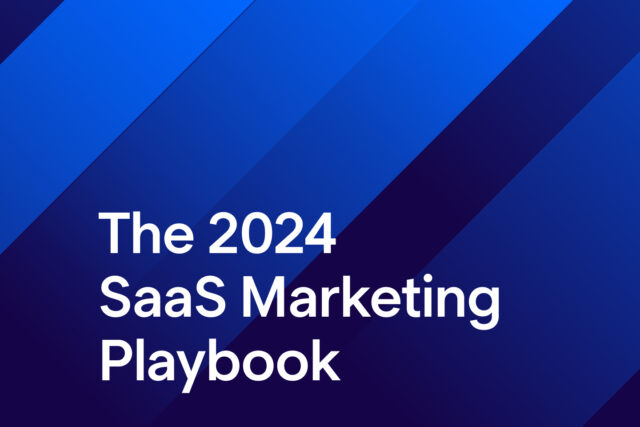With predictions indicating another year of sluggish economic growth, many marketers are grappling with how to deliver improved results with relatively flat budgets.
The economic outlook inevitably influences budget holders’ sentiment towards marketing spend and increases scrutiny on every pound invested. The latest IPA Bellwether report highlights this, projecting a real-term decline in advertising spend, compounded by inflation and rising costs for ad inventory and labour.

For B2B SaaS brands, this environment is exacerbated by a decline in net new software purchases, with new sales of SaaS down 17% year-over-year. The extension of the buying cycle for B2B SaaS products brings additional challenges, demanding more from marketers in delivering growth from a dwindling pool of customers.
“What’s the ROI on that?”
The question we’re asked more than any other is now becoming increasingly difficult to answer. This is largely due to the loss of data that’s historically been used to power digital attribution: Third party cookies.
Google may have delayed their deprecation of third-party cookies until 2025, but this still marks a significant shift in digital marketing targeting and measurement strategies.
This means marketers are now facing two converging challenges; the need to squeeze as much as possible out of your budget, whilst at the same time adapting to the measurement challenges we face in order to prove what’s working.
Strategies for profitable growth
To navigate these challenges, you need to adopt strategies that enable you to make the most of existing marketing budgets and prioritise bottom-line impact. Here, we’ve selected eight strategies that will help B2B SaaS brands thrive in a challenging market environment.
1. Optimise for Pipeline Impact
Recognising that not all conversions hold equal value is crucial for optimising media spend. Focusing on lower-funnel actions, such as meetings and opportunities, can significantly enhance the ROI of advertising efforts.
This requires a meticulous process involving offline conversion tracking (OCT), single-stage optimisation of bid strategies, and assigning tangible values to key conversion actions.
By prioritising actions that directly contribute to revenue, you can drive more meaningful outcomes from your campaigns.
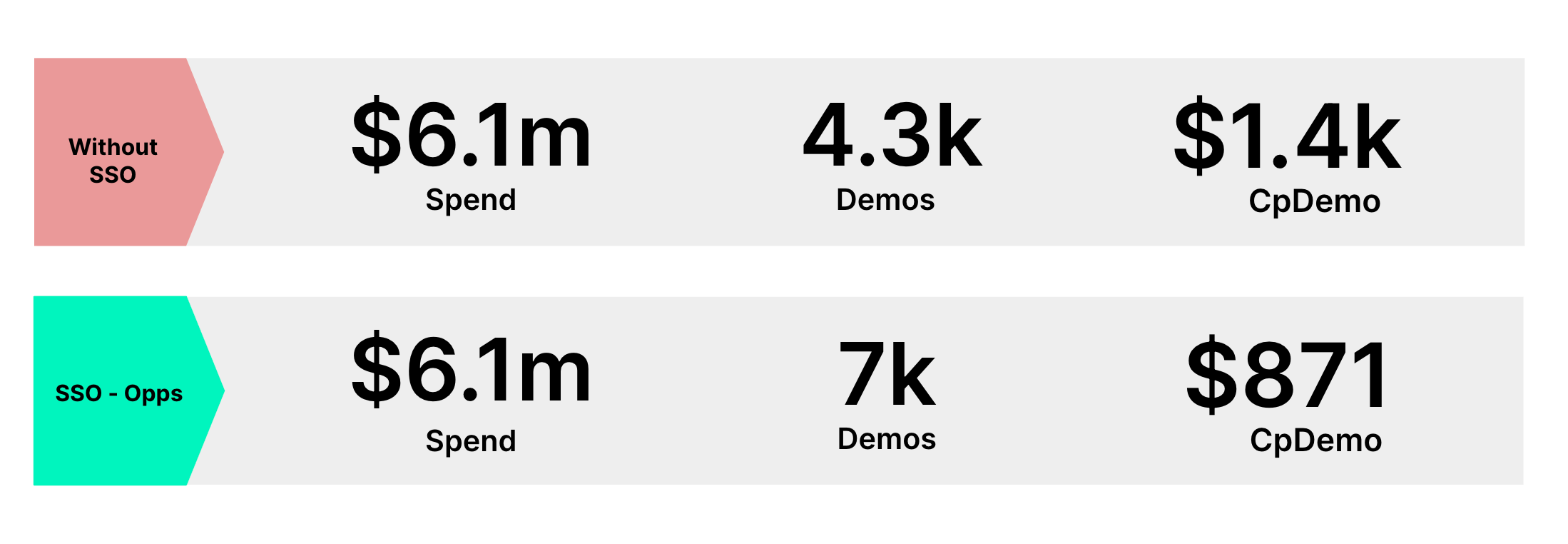
2. Move to privacy-first measurement
The deprecation of third-party cookies signals a seismic shift in digital marketing, propelling us from precision to predictive measurement. While challenging in the short-term, it will enable us to move towards more resilient, privacy-first marketing measurement frameworks .
To gain more clarity on marketing performance, many brands are increasingly investing in first-party data and exploring alternative measurement frameworks such as media mix modelling (MMM).
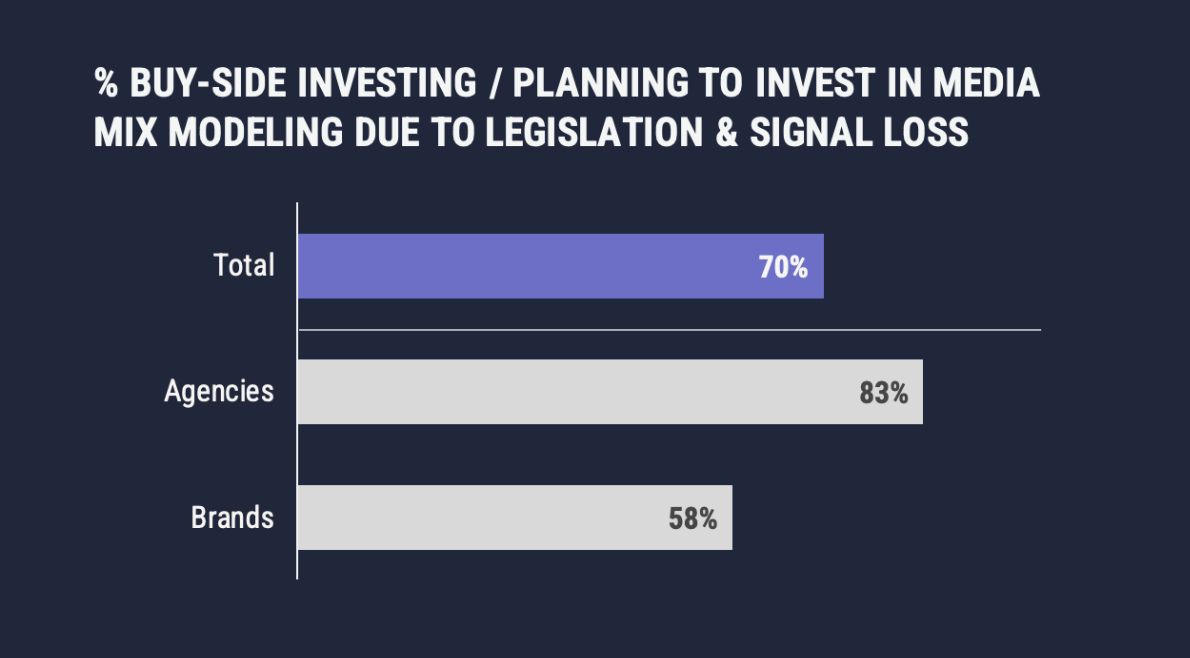
Google’s recent launch of Meridian, its own MMM solution, underscores the industry’s pivot towards these methodologies, despite scepticism about the objectivity of advertising networks’ MMM solutions.
In summary, you should be focusing on two areas over the coming months:
- Triangulate ROI: Employ a combination of MMM, multi-touch attribution (MTA), and experimentation to navigate the post-cookie measurement landscape.
- First-Party Data Accumulation: Prioritise the collection and management of first-party data to mitigate the impact of third-party sources. This will ensure you are able to match your ‘owned’ data for more reliable ad targeting and measurement.
3. Be less boring!
In the quest for profitable growth, standing out is non-negotiable. Moving beyond conventional feature-based B2B brand positioning to embrace contrarian and emotionally resonant messaging can dramatically increase the effectiveness of your advertising.

Creative that breaks the mould not only captures attention but can significantly extend the reach of your budget. As an example, one of our clients outperformed the Linkedin average clickthrough rate by 164% due to the distinctive creative we were able to develop.
4. Adopt Creative Best Practices
One trend we’re seeing is more brands investing in contextual due to limitations in cookie based tracking – with 66% of brands increasing spend on contextual targeting in 2024.
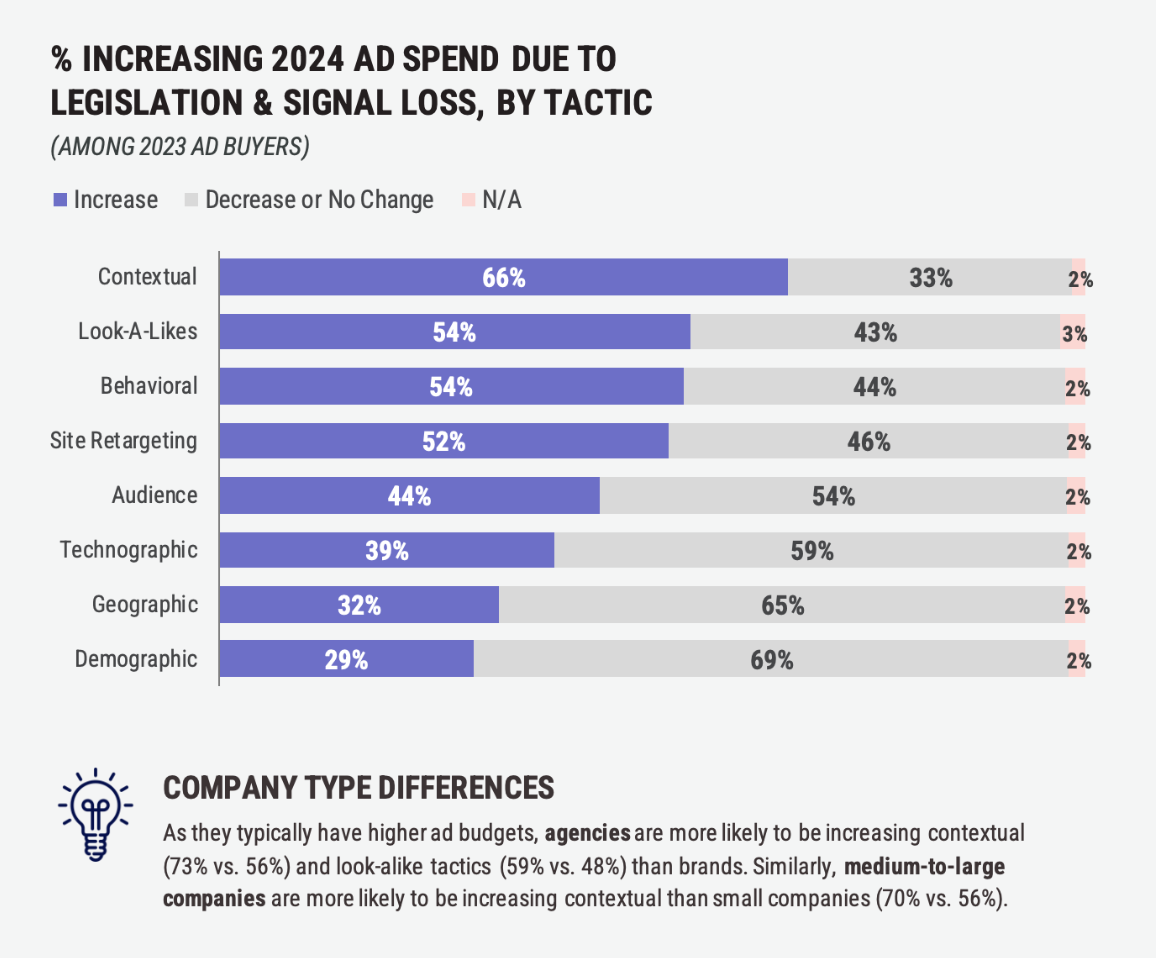
As the landscape shifts towards contextual advertising, the importance of high-quality creative increases as we can no longer rely on personalisation.
However, a recent study by Creative X emphasises the current state of creative quality in digital marketing, indicating that 52% of digital budgets are wasted on poor creative execution.
With a significant portion of digital budgets squandered on subpar creative, adhering to best practices in video length, aspect ratio, branding prominence, and sound optimisation is essential.
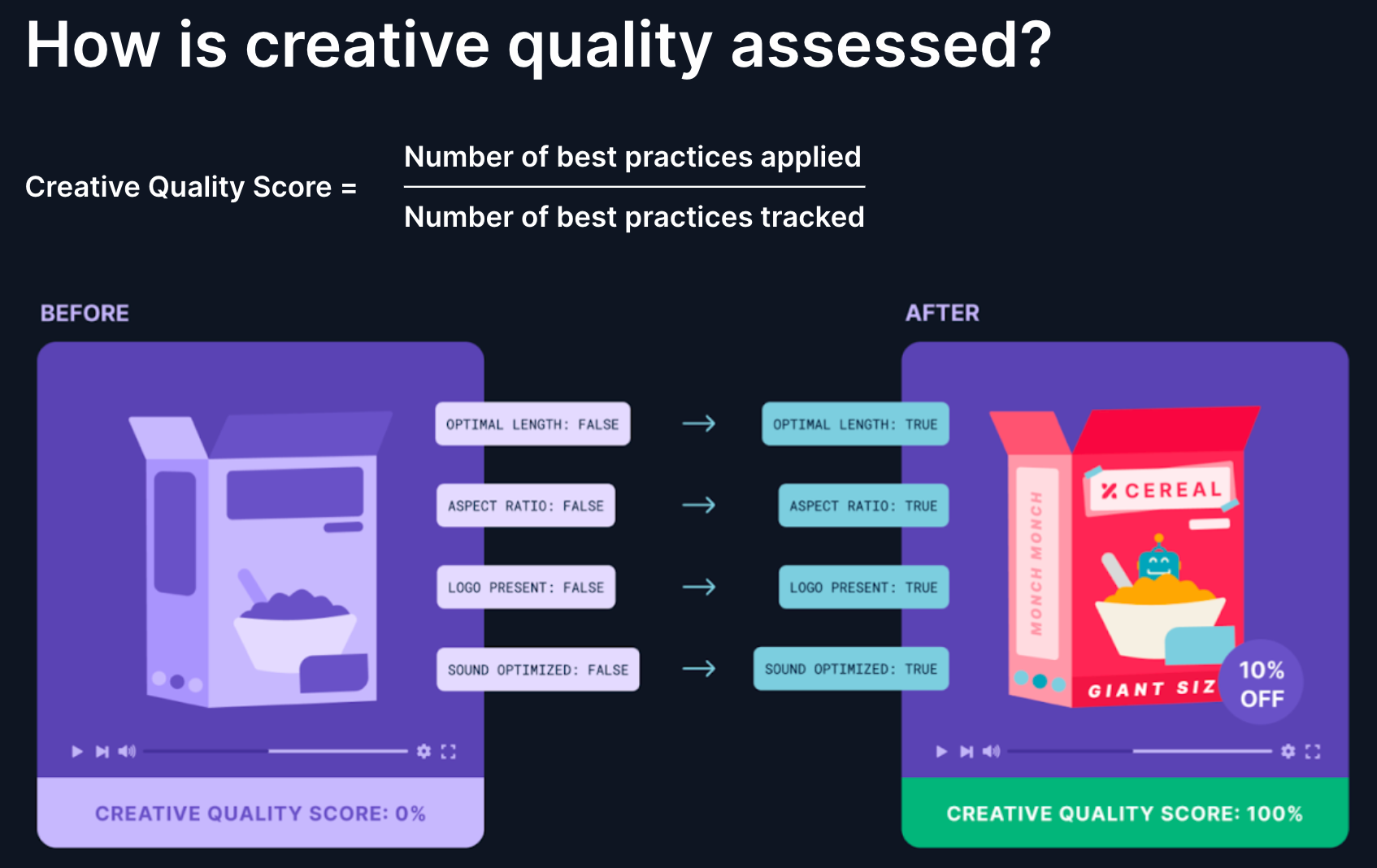
5. Don’t ignore the passive majority
Research by LinkedIn’s B2B Institute reveals that only 5% of potential buyers are actively searching for solutions at any given time, highlighting the importance of long-term brand advertising targeting the passive majority or potential buyers.
Reaching the “passive majority” (the other 95%) requires a robust brand building strategy that reduces your reliance on existing search demand. Building a brand that resonates with potential customers before they actively seek solutions can ensure your company is top of mind when they are ready to purchase.
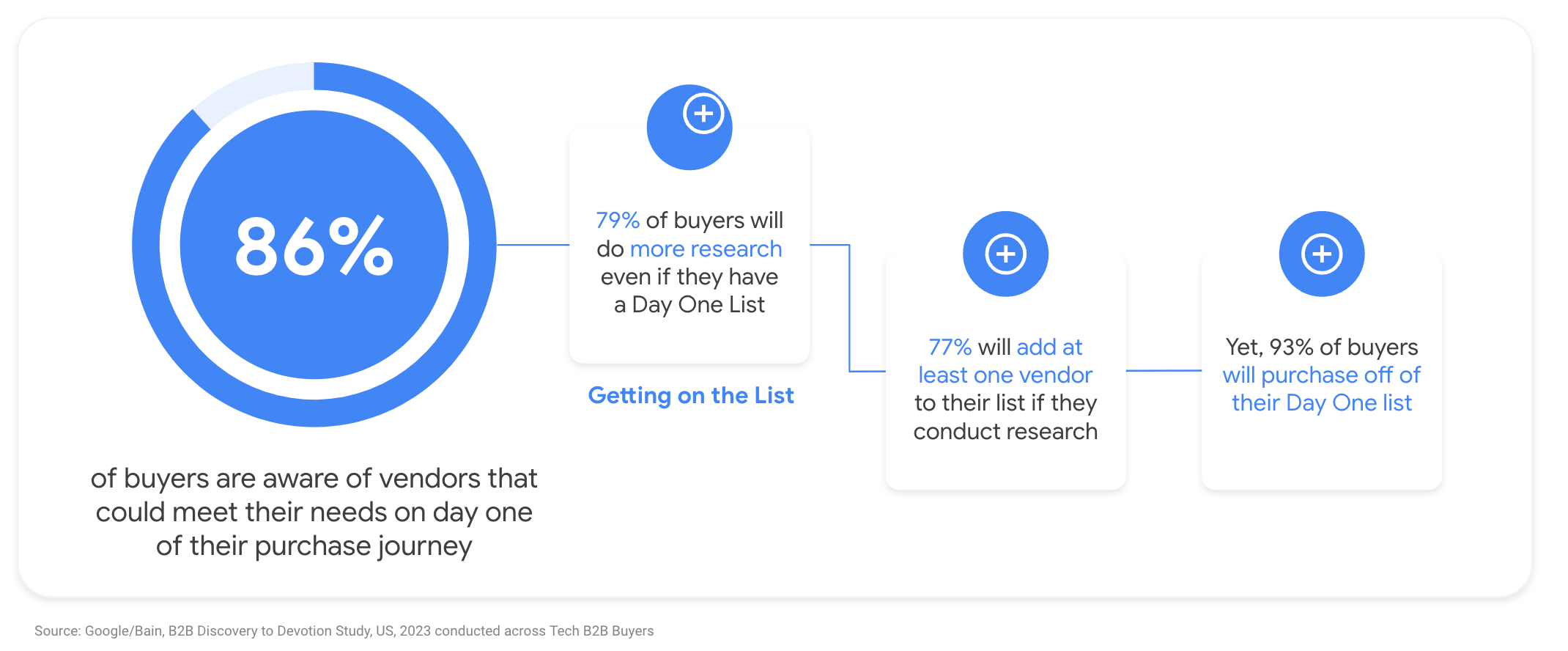
Ensuring potential customers know of your brand before they start searching for a solution is essential. A joint study by Google and Bain & Company found that 86% of tech B2B buyers have a list of vendors in mind before starting their research process, underscoring the value of brand awareness.
6. Integrate Search Data
Combining organic and paid search data, strategies and tactics can significantly improve your overall search performance. An integrated approach allows for more strategic allocation of marketing budgets, ensuring visibility where it’s most needed and greater efficiency in customer acquisition costs.
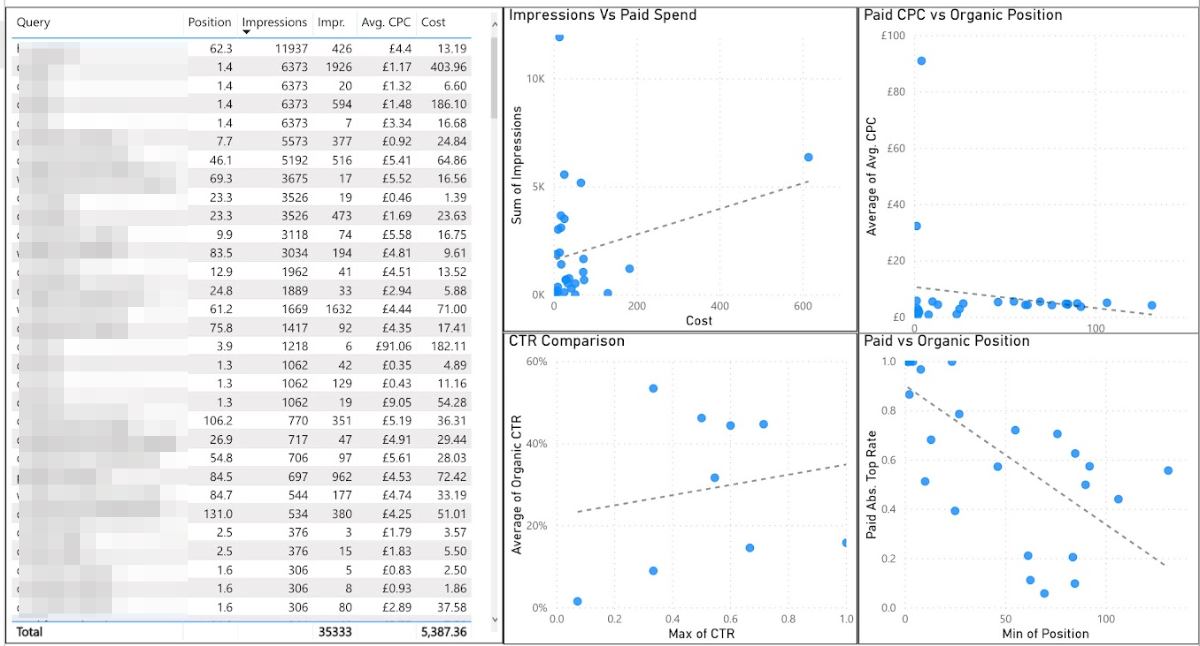
At Hallam, we combine keyword level data across paid and organic search to get a unified view of performance. This enables us to:
- Analyse where organic rankings are strong and where PPC spend could be reduced
- Map where organic rankings are weak and therefore paid media is needed to boost visibility on a key search term
- Bring down target CPA as long as the volume is picked up by organic search.
- Experiment with budgets to optimise overall search CAC.
- Share keyword research from paid to organic and vice versa – i.e. top volume drivers, low CPA, low impr. share (high potential for paid), high conv. rate, high competition/ad presence
Blending organic and paid search strategies will enhance the cost-effectiveness of customer acquisition efforts.
7. Invest in Thought Leadership for the AI Era
As generative AI lowers the barrier to content creation, distinguishing your brand through thought leadership becomes increasingly vital. We also know that Google’s Search Generative Experience is poised to reshape how we think about SEO and content, with potential to significantly reduce organic traffic to websites, putting greater emphasis on UGC.
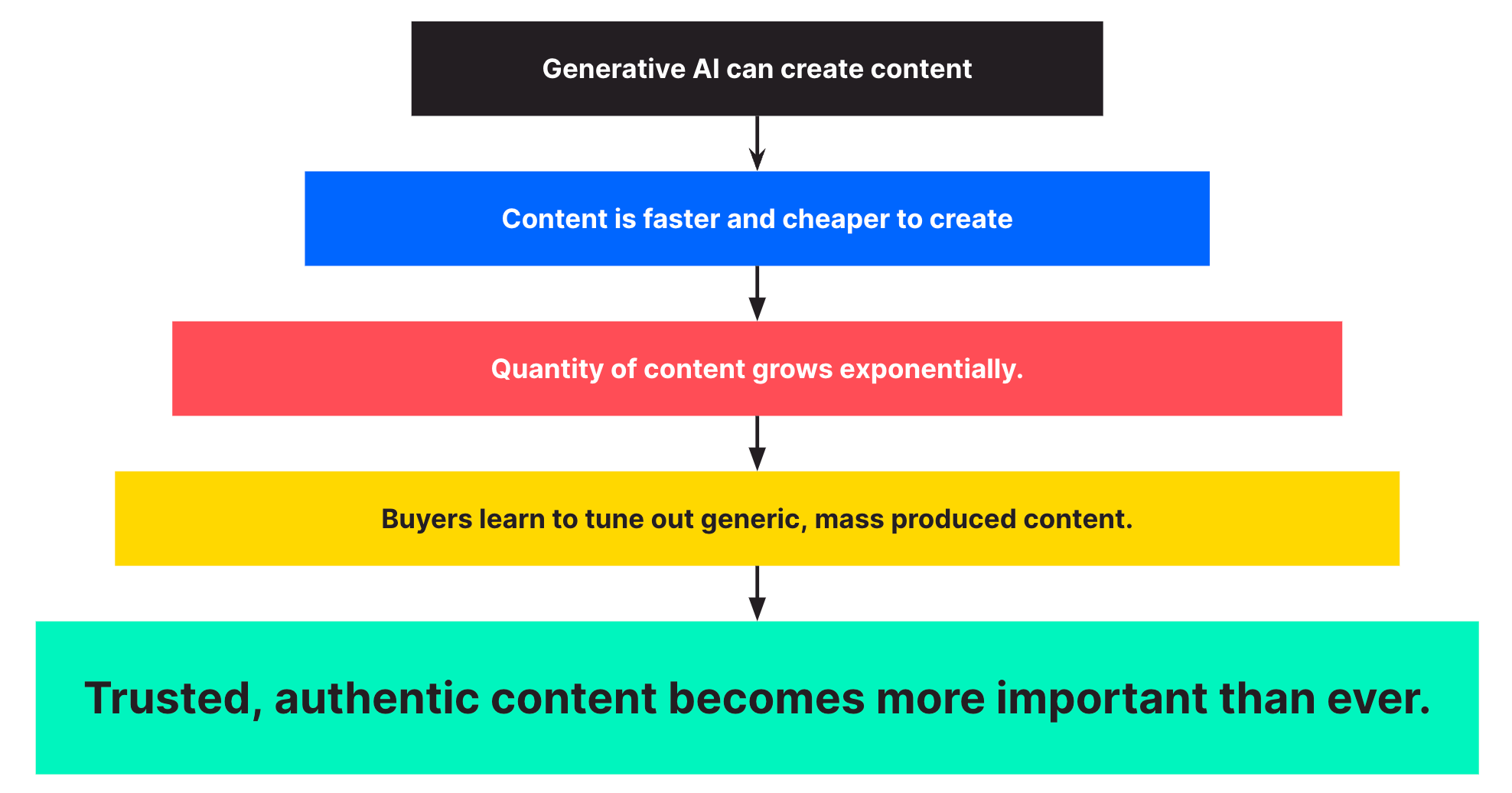
Thought leadership will not only help your brand stand out on search, it’s proven to influence the decision making process. A recent study from Edelman and Linkedin showed the impact of thought leadership on B2B decision makers, with 70% of decision makers more likely to consider a vendor after seeing them produce high-quality thought leadership.
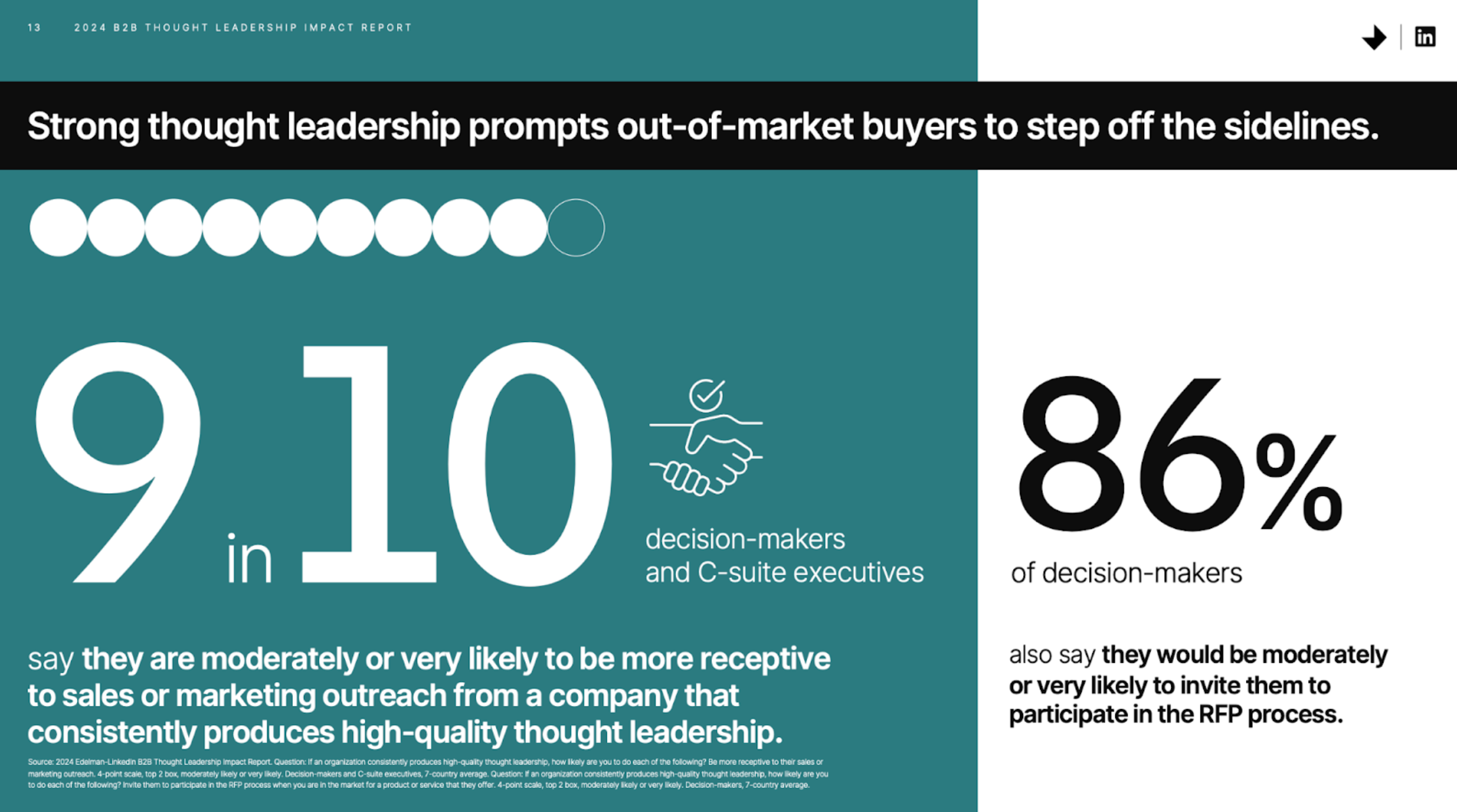
Focusing on creating content that offers unique insights and expert perspectives can help your brand cut through the noise and establish a strong, credible presence in your industry. Furthermore, it will improve your E-E-A-T credentials with Google – a win win!
Our advice to B2B marketers would be to double down on thought leadership as the centrepiece of your content strategy to stand out in the year to come.
8. Make it easy to buy!
Ensuring a frictionless buying journey is essential for converting interest (and website traffic) into sales.
A seamless experience, particularly at critical decision points, can significantly reduce the chances of potential customers abandoning their purchase intent.
We recommend a heuristic review of your website to assess where improvements can be made to boost conversion rate. Of course, an ongoing programme of CRO is the gold standard, but it’s not always feasible depending on traffic volumes.
As a starting point, why not review your own website through the lens of the 6 principles of persuasion to come up with an initial list of improvements.
The Road Ahead
By embracing privacy-first measurement strategies, optimising for down-funnel impact, refining creative approaches, and ensuring a seamless customer journey, you’ll better position yourself for sustainable growth.
The strategies outlined here offer a blueprint for more profitable SaaS marketing over the coming months. Of course, if you’d like any advice or are looking for support on the journey, please don’t hesitate to get in touch.
Looking to get more high-quality leads? Get in touch.


